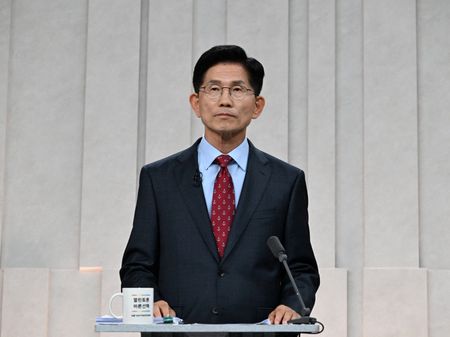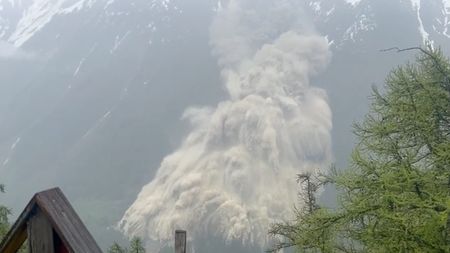MILAN (Reuters) -Global demand for liquefied natural gas will see a robust rise in the next few years, while gas will likely see a more gradual dynamic and oil may peak at the beginning of the next decade, scenarios published by Shell showed on Wednesday.
The British energy company has created three different scenarios for modelling energy security in the long term but added that they do not reflect its strategy or business plan.
The most positive outlook in terms of economic growth is dubbed ‘Surge’ and presupposes a pervasive use of artificial intelligence that would boost productivity globally and drive up the energy demand.
A second scenario called ‘Archipelagos’ sees countries around the world focused more on their self-interest than working together to spread the use of AI and develop renewable energy sources.
The ‘Horizon’ scenario is instead based on the assumption that the world will reach net-zero CO2 emissions by 2050 and deliver a global average temperature rise below 1.5 degrees Celsius by the end of the century.
“In all three scenarios, liquefied natural gas shows significant growth in the near term, fuelled by ongoing projects in Qatar and the United States, reaching around 550 million tonnes per year (MTPA) by the end of the decade,” Shell said in its report.
After 2030, the expectations on LNG diverge significantly in the three different scenarios, with supply for the super-chilled gas continuing to grow and reaching 700 MTPA beyond 2040 in the ‘Surge’ scenario. In the ‘Horizon’ scenario, LNG demand is seen peaking in the early 2030s.
Natural gas is seen growing until 2045 in the most upbeat scenario, ‘Surge’, while it is projected to peak in the very near term in the ‘Horizon’ scenario in order to meet net zero emissions by 2050.
Finally, Shell cites the electrification of road transport as the main reason for the world reaching peak oil demand in 2030 at the latest in the ‘Surge’ scenario.
In all the three scenarios Shell sees an upward pressure on energy demand.
“The scenarios highlight that primary energy demand in 2050 could be nearly a quarter higher than 2024 depending on economic growth rates, energy efficiency gains and the pace of electrification,” the report said.
The group is expected to release its outlook focused on LNG later this year.
(Reporting by Francesca Landini and Alessandro Parodi, Editing by Louise Heavens)










